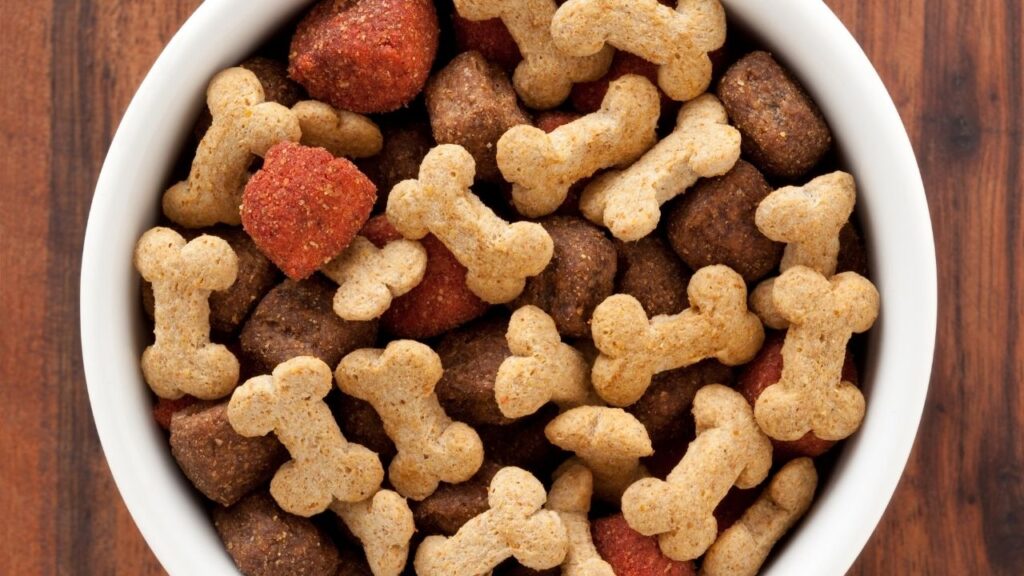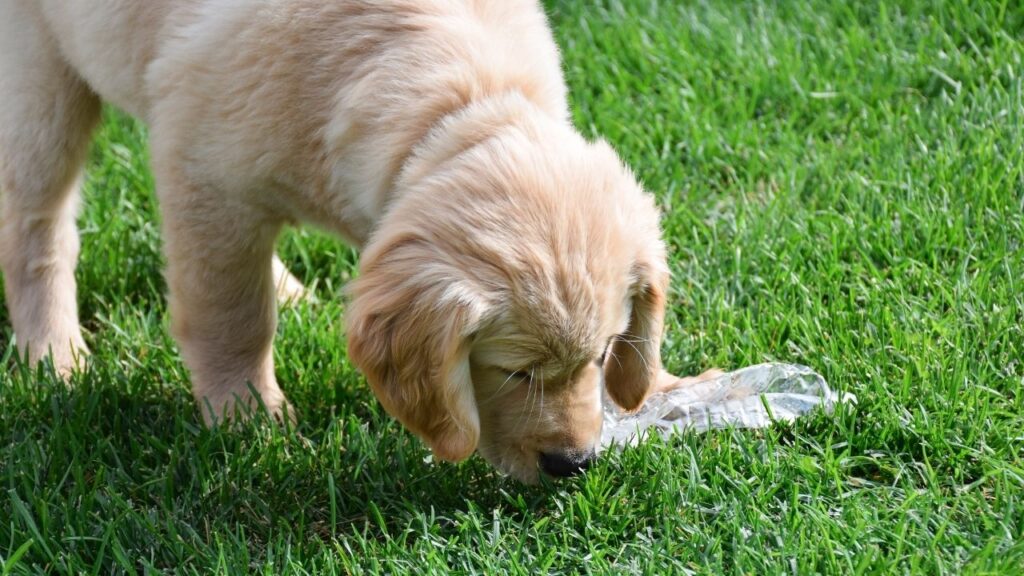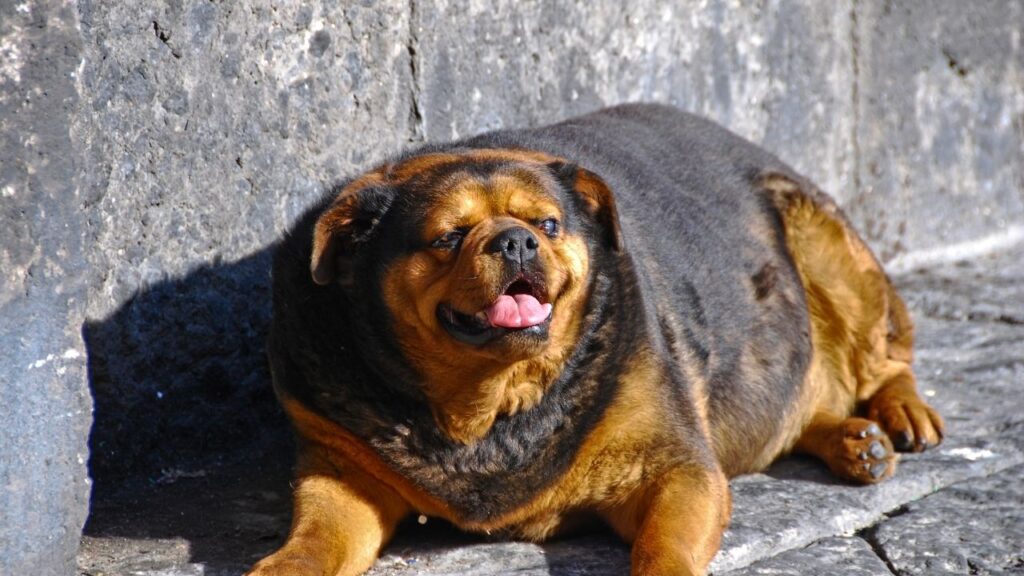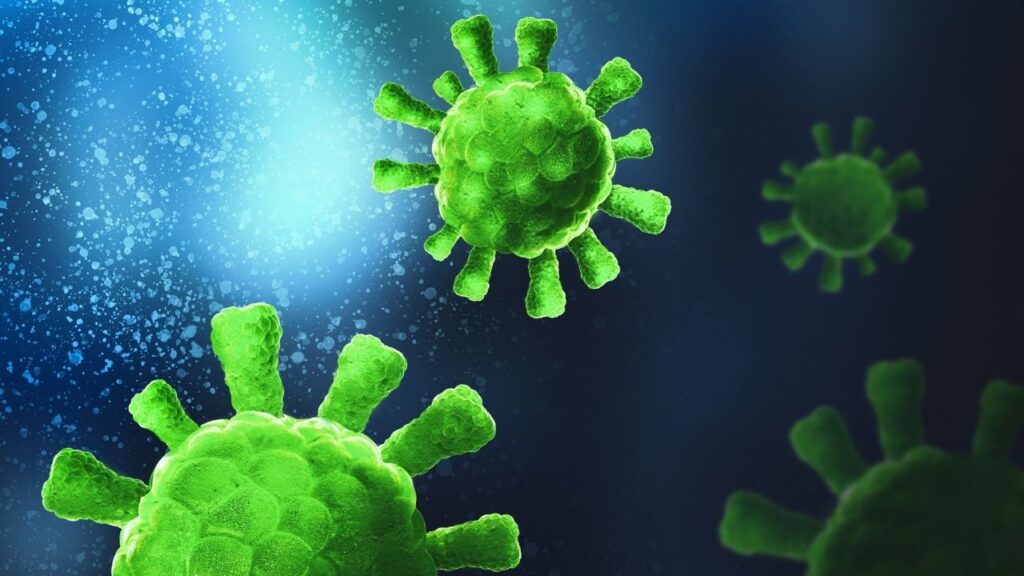Free radicals are the result of a natural and necessary cellular process called oxidation. Too many free radicals in your dog’s body can damage it and have been linked to a number of diseases. Reducing free radicals can help reduce your dog’s risk of developing cancer.
Key Takeaways
- Antioxidants can help neutralize free radicals in the body. They do this by donating one of their electrons to stabilize the free radical and prevent it from reacting with other molecules.
- Free radicals can react with molecules that are important to cellular functions, like DNA. This can cause the cell to not work properly.
- Drinking alkaline water can help to remove free radicals.
- Foods that are high in antioxidants, such as fruits and vegetables that contain flavonoids, can counteract free radicals. These include broccoli, kale, spinach, green beans, cranberries, raspberries, pomegranates, sweet potatoes, carrots, mangos, squash, blueberries, red cabbage, and more.
Free Radicals
Free radicals are a result of oxidation, a natural molecular process in the body that cells need to function normally. But too many free radicals can cause damage to your dog’s body and are linked to a number of diseases, including cancer.
To understand how free radicals affect your dog’s body – and what to do about it – some background information is necessary.
Let’s Start with the Basics – What is a Molecule?
All of the cells in your dog’s body are made up of molecules. Molecules are made up of chemical units called atoms.
Examples of atoms include:1
- oxygen (O)
- Iron (Fe)
- Calcium (Ca)
- Hydrogen (H)
The center of an atom is called the nucleus. It functions as its command center. (This nucleus is different from that of a cell.)
Each type of atom has a fixed number of electrons in its “orbit”, or electron shell. This number is needed for it to be stable. This is typically an even number whereby electrons operate in pairs of two.
An atom with an odd number of electrons is unstable. It will “share” its unpaired electron with a neighbor who also has an unpaired electron in what’s called a covalent bond. These two atoms together now form a stable molecule with an even number of electrons.
An Odd Number of Electrons Results in a Free Radical
Atoms or molecules that have an unequal number of electrons are called free radicals.2
Free radicals are desperate to become stable. This causes them to quickly react with other atoms and molecules in one of two ways:8
- Lose their unpaired electron in a process called oxidation.
- Steal an electron through a process called reduction.
This reaction in and of itself results in a free radical. That new free radical also wants to be stable.
It reacts and creates another free radical that wants to be stable, which reacts and creates another free radical that wants to be stable, and so on and so forth.1,3
One type of free radical linked to cancer involves oxygen, so let’s look at Reactive Oxygen Species next.
Free Radicals with Oxygen are Called Reactive Oxygen Species
Reactive Oxygen Species (ROS) naturally occur because of oxidation. This is a normal chemical process that’s necessary for many key cellular functions.5,6,7
ROS are important because they:5,6,7
- signal for cell division
- help make proteins
- fight off viruses and other pathogens
ROS are critical to health. For example, the DNA in human epithelial cells (cell that make up the thin layer that lines most tissues) was unable to replicate when ROS were removed.7,8
ROS are necessary for organisms that live in an oxygenated environment to survive. This includes us and our dogs.9
Too Much of a Good Thing
As important as free radicals are for health, too many free radicals in the body can have devastating consequences.6
Free radicals, like ROS, are quick to react. Too many free radicals cause molecules to react that don’t need to. Damage to the body, and even cancer, can result.9
Let’s talk about oxidative stress.
The Power of Antioxidants in Stopping Oxidative Stress
Most reactions that result in free radicals take place in the cell during cell division. Damage starts when there are too many ROS, and not enough antioxidants. This leads to oxidative stress.10,11 Oxidative stress can damage cells and the tissues made up of them.11
Our body compensates for this overload with antioxidants. Antioxidants slow down oxidation and restore balance.2
The impact of free radicals on cancer development and progression is difficult to understand because ROS have very short lifetimes, making them challenging to study.2 It is unclear exactly how oxidative stress is associated with cancer in dogs.12
We do know that free radicals may contribute to cancer by interacting with DNA.
The Impact of Free Radicals on DNA
We typically think of DNA as a simple double helix, but DNA is much more complicated. It can coil and uncoil to reveal binding sites for molecules to attach to, including free radicals.
Free radicals can cause DNA strands to break. Breaks in DNA are normal. The cell has repair mechanisms to ensure strands can be put back together correctly.9 Sometimes mistakes are made. These can have huge consequences.
More free radicals means more breaks in DNA that repair mechanisms may not fix correctly. Once that DNA replicates for cell division, those “daughter” cells now also have that same mistake. If that mistake is in a gene that’s associated with cell division or other related processes, then cancer can result.
Free Radicals Seek Out Certain Genes
Scientists used to think that free radicals affected random stretches of DNA. There’s now evidence that free radicals seek out specific genes. This makes them even more dangerous.13
Cancer cells can be negatively impacted by too many free radicals, just like healthy cells. However, cancer cells have more effective and efficient antioxidant systems. They are able to continue growing while other cells in the body suffer from the oxidative stress brought on by too many free radicals. This is one reason why cancer can be so relentless is its pursuit of metastasizing to other areas of the body.14
Dogs with cancer have more evidence of oxidative stress relative to their healthy counterparts. Malondialdehyde (MDA) is a common marker of oxidative stress in the body. MDA was significantly higher in dogs with cancer than those without.10
Harnessing the Power of Free Radicals for Good
Oncologists have chosen to work with free radicals rather than against them. Cancer cells may be better at neutralizing free radicals than healthy cells are, but even they have a breaking point.
This is the general concept behind chemotherapy and radiotherapy – flood the body with enough ROS to overpower the antioxidant systems in cancer cells.4
Research surrounding the treatment of cancer is continuing to explore ways free radicals and antioxidants can be manipulated to benefit cancer patients.
For example, could we remove antioxidants from cancer cells, rather than flooding the body with free radicals like we currently do? This worked for cancerous cells taken from pancreatic cancer patients.15 And even more exciting: the reduction of antioxidants didn’t affect healthy cells.15
Studies into this line of treatment are still needed. The above example is promising, but the way ROS and antioxidants impact healthy cells and cancer cells is likely not an “either, or.”16
Antioxidants Are Not “Always Good”
Antioxidants are the only molecules that can neutralize free radicals.17 But there must be a balance.
Factors that reduce the level of antioxidants in the body can contribute to oxidative stress and cancer. Similarly, factors that lead to more free radicals in the body also contribute to oxidative stress and cancer.10
Too many antioxidants may be as harmful as too few antioxidants. Balance is key.
How Your Dog Is Exposed to Free Radicals
Here are some common exposure risks for your dog when it comes to free radicals.
Environmental Toxins
Your dog will be exposed to environmental toxins throughout their lifetime.18 They will breathe in pollutants on their daily walks, roll in pesticides while playing outside, ingest heavy metals in the salmon you add to their food, and inhale secondhand tobacco smoke at the park.17
Even the things you do to benefit your dog – exercise, social opportunities, a healthy diet, and mental stimulation, will come with some risk of exposure to ROS.
Age
DNA damage naturally accumulates with age. Older dogs do not have DNA repair systems that work as well. DNA damage caused by ROS may be more likely to lead to cancer.9
Benign Tumors
The presence of a benign tumor in your dog is also a risk factor, because free radicals can cause it to develop malignant characteristics and become cancerous.19
A Past Cancer Diagnosis
This can sometimes be a risk factor in the likelihood of getting cancer a second time. Free radicals may not go back to normal when your dog reaches remission.
It’s not clear how these changes may contribute to the risk of developing cancer a second time. However, measures of biomarkers associated with oxidative stress in dogs with lymphoma suggests that free radicals can go back to “normal” pre-cancer levels.12
How to Reduce Risk from Free Radicals
Exposure to environmental toxins is inevitable, but you can make changes to reduce the degree to which your dog runs into them. Reducing free radicals in your dog’s life will benefit you as well.
The key is to make manageable changes so that you can implement them long-term.
Avoid using pesticides and insecticides on your lawn.
Swap out industrial cleaning products for ones made with more natural ingredients.20
You can also investigate adding an antioxidant supplement. Some ingredients to look for include:
- Cysteine
- Lactoferrin
- Resveratrol
- Superoxide dismutase
- Vitamins A, C, or E (if blood work shows a deficiency)
Another supplement you can consider giving your dog is melatonin. Melatonin has been linked to helping to prevent cancer and slow its progression by neutralizing ROS.3,11
Remember, high doses of antioxidants might be counterproductive, so ask your veterinarian if you are giving supplements with antioxidants.
Foods can also help boost antioxidant levels, and the bonus is that because they are in the diet, you are unlikely to over-supplement your dog.
Add foods that are rich in flavonoids, which can neutralize free radicals.11 Most fruits and vegetables have flavonoids.11 Safe ones to feed your dog in moderation after approval from your vet include broccoli, kale, spinach, green beans, cranberries, raspberries, ripe tomatoes, pomegranates, sweet potatoes, carrots, mangos, squash, banana, blueberries, blackberries, and red cabbage.11,5
Be Wary of Antioxidant Use During Chemotherapy or Radiotherapy
Giving your dog antioxidants if they are undergoing chemotherapy or radiotherapy may not be helpful. As we discussed above, the point of these treatments is to flood the body with free radicals in order to overwhelm the cancer cell’s antioxidant systems. They are meant to kill cancer cells with free radicals.
If you are using chemotherapy and/or radiation, giving antioxidants, especially in high doses, at the same time, can limit their effectiveness.3 However, antioxidants in your dog’s diet are likely fine.3
The evidence is not absolutely clear cut on this topic, and studies are ongoing about antioxidants and cancer. Some research suggests that antioxidants may increase chemotherapy’s ability to kill cancer cells.14 Antioxidants may also help offset some of the negative side effects associated with chemotherapy. For example, coenzyme Q10, an antioxidant, can offer protection against heart problems and is often recommended by oncologists to do exactly that.14
When it comes to giving antioxidants to your dog who is going through cancer treatments, it is best to consult with your veterinary oncologist about what they feel is best for your dog’s individual circumstances.
- No author. What is an atom? U.S.NRC. March 19, 2020. https://www.nrc.gov/reading-rm/basic-ref/students/science-101/what-is-an-atom.html. Accessed January 23, 2023.
- Cheeseman KH, Slater TF. An introduction to free radical biochemistry. Br Med Bull. 1993;49(3):481-493. doi:10.1093/oxfordjournals.bmb.a072625.
- Dressler E, Ettinger S. The Dog Cancer Survival Guide. Maui Media; 2011.
- Gupta N, Verma K, Nalla S, Kulshreshtha A, Lall R, Prasad S. Free radicals as a double-edged sword: the cancer preventative and therapeutic roles of curcumin. Molecules 2020:25(22):5390.
- Li H, Zhou X, Huang Y, Liao B, Cheng L, Ren B. Reactive Oxygen Species in Pathogen Clearance: The Killing Mechanisms, the Adaption Response, and the Side Effects [published correction appears in Front Microbiol. 2021 May 13;12:685133]. Front Microbiol. 2021;11:622534. Published 2021 Feb 4. doi:10.3389/fmicb.2020.622534
- No author. Antioxidants and Cancer Prevention. National Cancer Institute. No publication date available. https://www.cancer.gov/about-cancer/causes-prevention/risk/diet/antioxidants-fact-sheet. Accessed January 21, 2023.
- No author. New study reveals how ‘free radicals’ drive cell division, uncovering a potential new way to target cancer. The Institute of Cancer Research. July 27, 2022. https://www.icr.ac.uk/news-archive/new-study-reveals-how-free-radicals-drive-cell-division-uncovering-a-potential-new-way-to-target-cancer. Accessed on January 23, 2023.
- Kirova DG, Judasova K, Vorhauser J, et al. A ROS-dependent mechanisms promotes CK2 phosphorylation to drive progression through the S phase. Dev Cell 2022:57(14):P1712-1727.E9.
- Pourahmad J, Salimi A, Seydi E. Role of oxygen free radicals in cancer development and treatment. In: Free Radicals and Diseases (Ahmad E, ed.). InTech Open; 2016.
- Macotpet A, Suksawat F, Sukon P, et al. Oxidative stress in cancer-bearing dogs assessed by measuring serum malondialdehyde. BMC Vet Res. 2013;9:101. doi:10.1186/1746-6148-9-101.
- Tekiner-Gulbas B, Westwell AD, Suzen S. Oxidative stress in carcinogenesis: new synthetic compounds with dual effects upon free radicals and cancer. Curr Med Chem. 2013;20(36):4451-4459. doi:10.2174/09298673113203690142.
- Winter JL, Barber LG, Freeman L, Griessmayr PC, Milbury PE, Blumberg JB. Antioxidant status and biomarkers of oxidative stress in dogs with lymphoma. J Vet Intern Med. 2009;23(2):311-316. doi:10.1111/j.1939-1676.2009.0273.x.
- Hiroyasu M, Ozeki M, Kohda H, et al. Specific allelic loss of p16 (INK4A) tumor suppressor gene after weeks of iron-mediated oxidative damage during rat renal carcinogenesis. Am J Pathol. 2002;160(2):419-424. doi:10.1016/S0002-9440(10)64860-2.
- Conklin KA. Dietary antioxidants during cancer chemotherapy: impact on chemotherapeutic effectiveness and development of side effects. Nutr Cancer. 2000;37(1):1-18. doi:10.1207/S15327914NC3701_1.
- Chio IIC, Jafarnejad SM, Ponz-Sarvise M, et al. NRF2 Promotes Tumor Maintenance by Modulating mRNA Translation in Pancreatic Cancer. Cell. 2016;166(4):963-976. doi:10.1016/j.cell.2016.06.056.
- Alfano A. What’s the connection between antioxidants and cancer? Cold Spring Harbor Laboratory. October 14, 2016. https://www.cshl.edu/labdish/whats-the-connection-between-antioxidants-and-cancer/. Accessed January 23, 2023.
- Aseervatham GS, Sivasudha T, Jeyadevi R, Arul Ananth D. Environmental factors and unhealthy lifestyle influence oxidative stress in humans–an overview. Environ Sci Pollut Res Int. 2013;20(7):4356-4369. doi:10.1007/s11356-013-1748-0.
- No author. Importance of Antioxidants for Dogs. Vetericyn Animal Wellness. January 23, 2020. https://vetericyn.com/blog/importance-of-antioxidants-for-dogs/. Accessed on January 23, 2023.
- Okada F. Inflammation and free radicals in tumor development and progression. Redox Rep. 2002;7(6):357-368. doi:10.1179/135100002125001135.
- La Forge T. Free Radicals! How These Molecules Affect Your Body. Greatist. December 17, 2020. https://greatist.com/health/free-radicals. Accessed on January 26, 2023.
Topics
Did You Find This Helpful? Share It with Your Pack!
Use the buttons to share what you learned on social media, download a PDF, print this out, or email it to your veterinarian.






